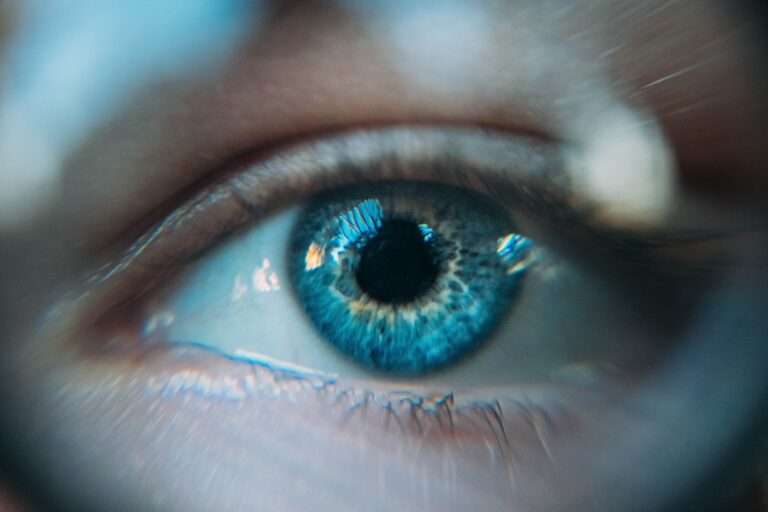Unlocking the Mysteries of the Mind: Exploring Dream Content Discovery

Dream Content Discovery refers to the process of understanding and interpreting the content of dreams. Dreams have fascinated humans for centuries, and understanding their meaning and significance has been a topic of interest across cultures and time periods. Dream Content Discovery is important because it provides insight into the unconscious mind, helps us understand ourselves better, and can contribute to personal growth and well-being.
The Science of Dream Interpretation
Dream interpretation has a long history, dating back to ancient civilizations such as the Egyptians and Greeks. In these early cultures, dreams were believed to be messages from the gods or divine entities. Over time, different theories of dream interpretation emerged, including Freud’s psychoanalytic theory, which emphasized the role of the unconscious mind in dreams.
Freud believed that dreams were a way for the unconscious mind to express repressed desires and wishes. He argued that dream content was symbolic and needed to be interpreted to uncover its true meaning. Other theories of dream interpretation include Jung’s theory of archetypes and the collective unconscious, which suggests that dreams contain universal symbols and themes that are shared across cultures.
Understanding the Role of Dreams in the Mind
Dreams occur during different stages of sleep, with the most vivid and memorable dreams occurring during REM (rapid eye movement) sleep. During REM sleep, the brain is highly active, and dreams are thought to play a role in memory consolidation and emotional processing.
Research has shown that dreams can help consolidate memories by replaying and reactivating neural pathways associated with recent experiences. Dreams also provide an opportunity for emotional processing, allowing individuals to work through unresolved emotions or experiences in a safe and symbolic way.
The Power of Symbolism in Dreams
| Symbol | Meaning | Example |
|---|---|---|
| Water | Emotions, subconscious | A dream of drowning may indicate overwhelming emotions |
| Snake | Fear, transformation | A dream of a snake shedding its skin may indicate personal growth |
| Flight | Freedom, escape | A dream of flying may indicate a desire for freedom or escape from a situation |
| Death | Change, transformation | A dream of death may indicate the end of a phase in life and the beginning of a new one |
| Fire | Passion, transformation | A dream of a burning house may indicate a desire for change or transformation in one’s life |
Symbols play a significant role in dream content, as they often represent deeper meanings or emotions. The meaning of symbols in dreams can vary depending on personal associations and cultural context. For example, a snake may symbolize danger or transformation in one culture, while in another culture it may represent wisdom or healing.
Common dream symbols include water, which can represent emotions and the unconscious mind, and flying, which can symbolize freedom or a desire for escape. It is important to consider personal associations with symbols when interpreting dreams, as the meaning of a symbol can vary from person to person.
Uncovering the Meaning of Common Dream Themes
Dreams often contain recurring themes that can provide insight into our thoughts, emotions, and experiences. Common dream themes include falling, being chased, or being naked in public. These themes can have different interpretations depending on the individual’s personal experiences and cultural background.
Recurring dreams are particularly significant, as they often indicate unresolved issues or emotions that need to be addressed. For example, a recurring dream of being chased may suggest that the individual is avoiding or running away from a problem in their waking life. Exploring the meaning behind common dream themes can help individuals gain a deeper understanding of themselves and their experiences.
The Connection Between Dreams and Emotions

Dreams and emotions are closely intertwined, with dreams often reflecting our emotional state and experiences. Emotions can influence dream content, with positive emotions leading to more pleasant dreams and negative emotions leading to more disturbing or anxiety-provoking dreams.
Exploring emotions in dreams can provide valuable insights into our emotional well-being and help us process unresolved feelings or experiences. Techniques such as lucid dreaming or dream incubation can be used to explore emotions in dreams and gain a deeper understanding of ourselves.
Techniques for Enhancing Dream Recall
Dream recall refers to the ability to remember and recall the content of dreams. Improving dream recall can be beneficial for understanding dream content and gaining insight into ourselves. Tips for improving dream recall include setting the intention to remember dreams before going to sleep, keeping a dream journal by the bedside to record dreams upon waking, and practicing mindfulness and relaxation techniques.
Keeping a dream journal is particularly helpful, as it allows individuals to track patterns, symbols, and themes in their dreams over time. By regularly recording dreams, individuals can develop a better understanding of their dream content and identify recurring patterns or symbols.
Analyzing Dream Content for Personal Growth
Analyzing dream content can be a powerful tool for personal growth and self-discovery. By exploring the meaning and symbolism in dreams, individuals can gain insight into their thoughts, emotions, and experiences. Techniques for analyzing dream content include free association, where the individual explores their personal associations with dream symbols or themes, and amplification, where the individual explores the broader cultural or archetypal meanings of dream symbols.
Dream analysis can help individuals identify patterns or themes in their dreams that may be related to unresolved issues or emotions in their waking life. By bringing these unconscious thoughts and feelings to conscious awareness, individuals can work towards resolving them and promoting personal growth.
The Link Between Dreams and Creativity
Dreams have long been associated with creativity, with many artists, writers, and musicians drawing inspiration from their dreams. Dreams can provide a rich source of imagery, ideas, and emotions that can be used in creative processes.
Techniques for using dreams to enhance creativity include keeping a dream journal specifically for creative purposes, using dreams as a starting point for artistic projects or writing, and incorporating dream imagery or themes into creative work. By tapping into the unconscious mind through dreams, individuals can access new perspectives and ideas that can enhance their creative endeavors.
Future Directions in Dream Content Discovery Research
Current research on dream content discovery is focused on understanding the neural mechanisms underlying dreaming, exploring the relationship between dreams and mental health, and developing new techniques for analyzing dream content.
Future directions for dream content discovery research include using advanced neuroimaging techniques to study brain activity during dreaming, investigating the impact of dream content on mental health outcomes such as anxiety and depression, and developing computer algorithms or artificial intelligence systems to analyze dream content.
The potential impact of dream content discovery on mental health and well-being is significant. By understanding and interpreting dream content, individuals can gain insight into their thoughts, emotions, and experiences, leading to personal growth and improved well-being.
In conclusion, Dream Content Discovery is the process of understanding and interpreting the content of dreams. It involves exploring the symbolism, themes, and emotions in dreams to gain insight into ourselves and promote personal growth. Dream interpretation has a long history, with different theories and approaches emerging over time. Dreams play a role in memory consolidation and emotional processing, and exploring dream content can provide valuable insights into our thoughts, emotions, and experiences. By understanding dream content, we can gain a deeper understanding of ourselves and promote personal growth and well-being.
If you’re interested in exploring the fascinating world of symbolism, you might want to check out this article on the Symbolism Hub website. It delves into the profound meaning behind the star symbol, shedding light on its various interpretations across different cultures and belief systems. From representing guidance and hope to symbolizing divine energy and enlightenment, the star holds a significant place in our collective consciousness. Discover more about the symbolism of the star here.
FAQs
What is Dream Content Discovery?
Dream Content Discovery is a technology that uses artificial intelligence to analyze user behavior and preferences to recommend personalized content.
How does Dream Content Discovery work?
Dream Content Discovery uses machine learning algorithms to analyze user data such as search history, browsing behavior, and social media activity to recommend personalized content.
What kind of content can be discovered using Dream Content Discovery?
Dream Content Discovery can recommend a wide range of content including articles, videos, music, podcasts, and more.
Is Dream Content Discovery available on all devices?
Dream Content Discovery can be integrated into various devices and platforms including mobile apps, websites, and smart TVs.
Is Dream Content Discovery free to use?
The availability and cost of using Dream Content Discovery depends on the platform or device it is integrated with. Some platforms may offer it for free while others may require a subscription or payment.
Is Dream Content Discovery safe to use?
Dream Content Discovery uses user data to recommend personalized content, but it is designed to protect user privacy and data security. Users can also control their data and opt-out of data collection if they choose to do so.





